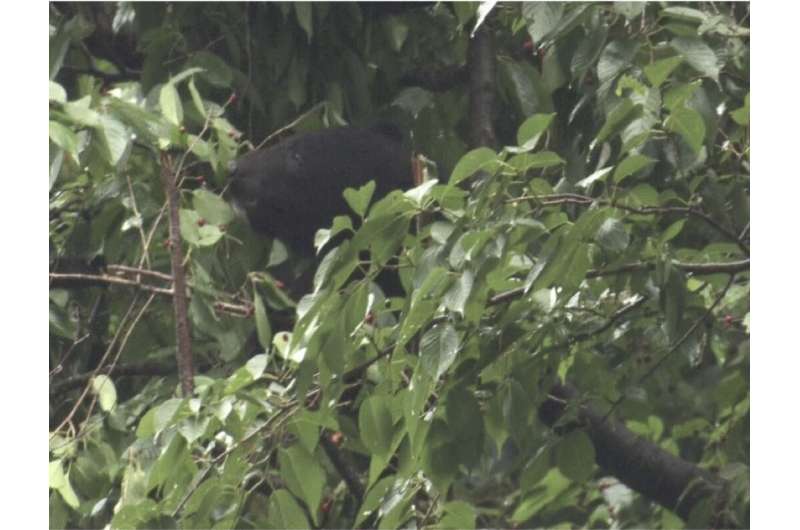Feeding habits differ by age and sex in Asian black bears

A 10-year study shows that the diets of Asian black bears vary greatly depending on sex, stage of life, and resource availability, providing important information on foraging strategy according to age-sex classes. Researchers in Japan have published their findings in Mammal Study.
Scientists knew Asian black bears were omnivores, feeding mostly on plants. The bears also prey on animals such as deer and insects. Their diets change based on the abundance of those resources each season. However, scientists did not previously know exactly how much and under what conditions the bears' diets changed.
Japanese wildlife scientists and ecologists at Tokyo University of Agriculture and Technology, the Forestry and Forest Products Research Institute, and Tokyo University of Agriculture have analyzed the bears' diet profiles. Their end goal was to better understand the bears' feeding habits in relation to their age, sex and acorn production.
"Several thousand bears are killed annually as nuisances in Japan. In the context of reducing human-bear conflict, understanding dietary differences among age-sex classes of bears would help to facilitate the management of habitat conditions to preserve a suitable habitat for bears, to separate their habitats and human settlements, or both," said Tomoko Naganuma, an assistant professor at Tokyo University of Agriculture and Technology.
The study took place on a 460-square-kilometer area in the southern Ashio-Nikko mountains in central Japan. The researchers took hair samples from the backs and shoulders of trapped bears. They first divided out the hair samples by growth rate, so they could later chart bear diets across reproductive season (from June to July) and hyperphagia seasons (from mid-September and October, when bears become more active and eat more to prepare for winter hibernation). The researchers analyzed the samples for carbon-nitrogen isotope ratios, which comprise reliable indicators of the bears' diets.
The researchers found that the bears' consumption of plant-based food was relatively constant during the reproductive season among the age-sex classes studied. However, older bears are more carnivorous. Adult males are especially more likely to consume deer than other members within the population. The larger body mass of adult males may be advantageous in competing for food. During the hyperphagia season, bears were mostly dependent on acorns, regardless of abundance. However, during years of poor acorn production in the study area, the bears consume an increased proportion of animal materials, suggesting that they consume them as alternatives to acorns.
"Because distribution, abundance and composition of food resources vary in each bear habitat, it will be important to investigate the foraging strategy in various populations," Naganuma said.
More information: Tomoko Naganuma et al, Age- and Sex-Associated Differences in the Diet of the Asian Black Bear: Importance of Hard Mast and Sika Deer, Mammal Study (2020). DOI: 10.3106/ms2019-0051
Provided by Tokyo University of Agriculture and Technology



















